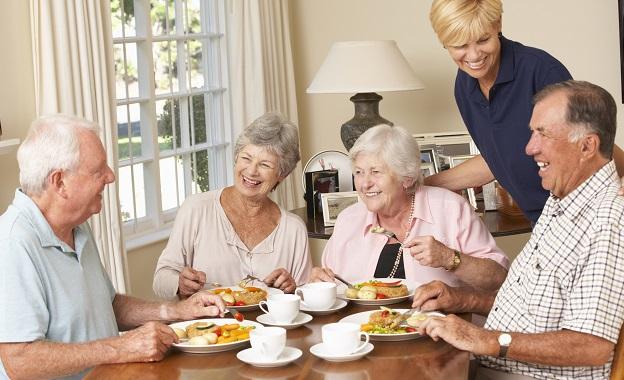Three Quality of Lifehacks to Creating a Comfortable Space for Seniors
By: Quality of Lifehacks

Three Quality of Lifehacks to Creating a Comfortable Space for Seniors
The world’s senior population is continuing to grow fast. The United Nations projects that by 2030 the global senior population will grow to 1.4 billion. With this growing population, the number of people impacted by an age-related disease or health condition will significantly increase. For example, more than 90 percent of adults have a deficit in at least one of their five senses, according to the Journal of the American Geriatrics Society.
To help increase awareness regarding the negative effects sensory impairments have on seniors living in long-term care communities, Sodexo and the University of Ottawa’s Life Research Institute partnered to develop new thinking, from simple changes to technological innovations, to ensure everyone can raise their level of care for seniors.
Whether you work or know a senior in a long-term care community or are taking care of one at home, here are three quality lifehacks to consider when creating a comfortable space for the person.
Use high-contrast colors when decorating
- Seniors with diminished vision often have difficulty distinguishing between similar colors or seeing gestures that others take for granted. Long-term care communities should use high-contrast colors in walls, furniture’s and signs to help them see.
Minimize background noise from heating and air condition systems
- Hearing impairments can make participating in conservations for senior’s difficult. To help alleviate this challenge, communities should reduce background noise to make it easier for seniors to hear. Background noise could come from heating and cooling systems or equipment and cleaning services.
Create an open kitchen to help residents smell food and stimulate appetites
- The ability to recognize sensory cells within taste buds decreases with age. When a senior experiences a decreases in their sense of taste, they can lose interest in food which results in weight loss, poor nutrition and a weakened immunity. To help improve and adapt to a senior who is losing their sense of taste, focus on quality ingredients, attractive presentation and texture that is safe. When preparing food, use an open kitchen that allows residents to be involved in cooking, which is therapeutic and creates a home-like environment.
What are others way we can improve long-term care communities? Share your ideas on Sodexo Insights.

